#alan brennert
Text

April 1983. How the Earth-2 Batman and Catwoman finally worked it out, in Alan Brennert's exceptionally poignant "The Autobiography of Bruce Wayne" in THE BRAVE AND THE BOLD #197.
#comics#the brave and the bold#brave and the bold#alan brennert#joe staton#george freeman#golden age batman#batman#bruce wayne#catwoman#selina kyle#pre crisis#batcat#batromance
26 notes
·
View notes
Text

Book review - Moloka'i by Alan Brennert
I highly recommend this one. It tells the story of a girl named Rachel, who was born in Hawaii in the late 1800s. A bounty hunter discovered that she had leprosy when she was 6, and she was taken to the leper colony of Molokai's shortly after. That was where she was forced to remain until her 60s. She was raised by nuns, and then got married to a Japanese man named Kenji. They had a daughter, who was taken away and given up for adoption as per the policy of that time.
Although very isolated from the rest of the world, Rachel's life on Moloka'i was quite rich. While initially a place where people were left to die, over the years Moloka'i turned into a rich community. Today it is a national park that only admits a very few number of visitors, but a few of the original residents of the colony still live there.
There is a sequel to the book, called Daughter of Moloka'i, about Rachel's daughter, that I picked up and will also read. Shockingly, Rachel did not know that her daughter was sent to a Japanese internment camp after her adoptive parents moved from Hawaii to California, as Hawaii was under different martial law during WWII.
9 notes
·
View notes
Text

Daredevil Vol. 1 #192
Writer(s)
Alan Brennert
Penciler(s)
Klaus Janson
Inker(s)
Klaus Janson
Colorist(s)
Klaus Janson
Letterer(s)
Joe Rosen
#daredevil#matt murdock#wilson fisk#kingpin#alan brennert#klaus janson#marvel#marvel comics#comics#comic art
8 notes
·
View notes
Text




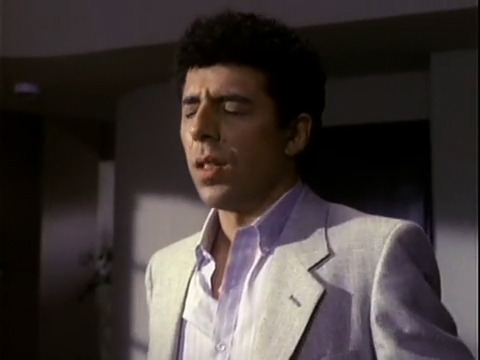
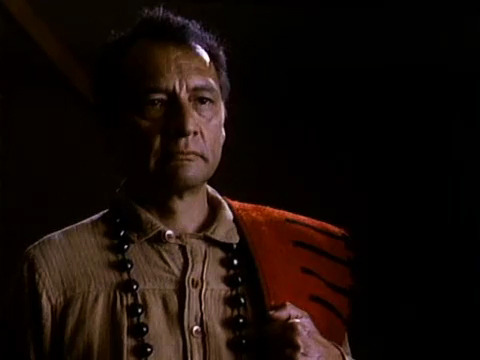


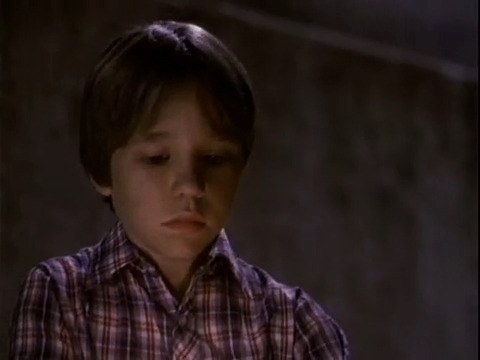

1.03a Healer
Director: Sigmund Neufeld Jr.
Writer: Alan Brennert (credited under the name “Michael Bryant”)
Cinematographer: Bradford May
Opening narration:
“Ah, Jackie, Jackie, you're a small-timer. A roof crawler, a poke pincher, a nickel and dime drifter with salt in your dreams and ashes in your pocket. Don't cut that wire...Jackie, don't open that window. You won't be able to jimmy yourself out as easily as you got in. That's not the big score in there. It's the Twilight Zone.”
Summary:
Jackie Thompson (Eric Bogosian) is busy at work burglarizing a museum. In an exhibit of objects on loan from El Museo Nacional de Arqueología in Mexico City,* Jackie finds a gleaming crystal. Jackie accidentally trips the alarm when opens the case for the crystal and is chased by a guard. Jackie is shot, but escapes. Hiding in an alley outside of the museum, Jackie clutches the crystal, which begins to glow. Suddenly, his wound is healed.
Later at his apartment building, Jackie’s friend and neighbor, Harry (Vincent Gardenia) has dropped dead. Jackie quickly runs to retrieve the crystal and uses it to bring Harry back to life. When Harry wakes up, he tells Jackie about his near-death experience and the two begin to hatch plans for this new-found power.
Skipping ahead, Jackie, now going by “Brother John,” and Harry have started a thriving televised faith-healing operation. Backstage, it’s clear that Harry’s mind is solely focused on growing the business, while Jackie/John is interested in helping as many people as possible.
Here enters Duende (Joaquín Martínez), who requests that Jackie return what was stolen, explaining that it is an important object for his people** and it was only temporarily on loan to the museum. Jackie is at first amenable, but Harry shuts it down. Duende warns Jackie that this refusal was a turning point.
Back at their new mansion, Jackie and Harry get an unexpected visit from a crime boss, Joseph Ribello (Robert Costanzo). Jackie once worked under Ribello, who was a cruel employer. Now, Ribello has learned that he has lung cancer and he’s come to Jackie to ask for healing. Jackie makes Ribello grovel and asks for two million dollars payment. But, when Jackie goes to heal Ribello, the crystal doesn’t light up. Nothing happens.
Jackie and Harry leave for their TV broadcast, but Jackie is panicking that the crystal isn’t working. Harry collects someone from the line of people waiting to be healed, a deaf child. It’s now five minutes to air time, but the crystal has gone totally dark.
Once again Duende appears backstage and explains to an angry Jackie that the healing only works permanently if the intentions of the user are unselfish—this was the turning point Duende referenced earlier.
Jackie’s gunshot wound reappears. Jackie runs to find Harry and asks him to use the crystal on him, but Harry is too far gone. Harry plans on letting Jackie die and keeping their earnings for himself.
Jackie collapses, but he’s been followed by the deaf child. The child heals Jackie using the crystal. And, now that he has learned his lesson, Jackie is able to grant the child hearing. Jackie returns the crystal to Duende and walks away from the theatre with a new lease on life.
Closing narration:
"Now, he is John—no longer Jackie. Perhaps not Brother John, brother to all men, but at least fit to walk among men who care. Because caring is part of the secret, the secret we all learn, that the heart cannot heal what the eye cannot see. Not even, in the Twilight Zone."
✨Support✨
*It isn’t spoken in the episode that the artifact came from a museum in Mexico City, it’s visible on a sign in the establishing shot of the exhibit. That doesn’t necessarily mean that the artifact is specifically from the area of CDMX.
**When Duende is talking to Jackie here, he does not specify who precisely his people are. I bring this up to point out the awkward indigenous stereotypes at work in this episode. Duende is not a full-fledged character in this episode and his appearances and disappearances are presented as if they are vaguely mystical.
More about Healer:
I’m disappointed to say this so early on in my review of this series, but Healer is the first proper dud of TZ ‘85. There are worse episodes later on, but this one just doesn’t match the quality of the previous stories.
Reportedly, Alan Brennert, the writer of Healer, is in agreement with me. Brennert reworked the story for a prose short story later. I hope I can get my hands on a copy to maybe get some insight into what specific faults Brennert found in this story. Brennert places some blame on the segment’s director, Sigmund Neufeld Jr. Seeing that this is Neufeld’s only episode of the series, Brennert likely wasn’t alone in his dissatisfaction.
Healer is somehow underbaked and overdone at the same time. A cat burglar with a heart of gold, his father figure with a two-bit mindset, a particularly unkind mob boss being forced to face his own mortality are all potentially interesting archetypes to weave into a story about a stolen object with supernatural powers—but all this gels into nothing much at all. The undoubtedly talented cast is doing the best with what they are given, but there’s just not enough time given to explore anything fully. Robert Costanzo’s mob boss only has one scene! The characters never properly transcend their typage, even though, in the case of Bogosian’s Jackie, that transcendence is key for the story—as it’s told here at least.
That said, the story additionally dabbles in stereotypes of mystical indigenous people. In a different take on this story, there could be potential for some kind of conversation about cultural appropriation vs. appreciation. However, in this form, there is no attempt to address, avert, or subvert the insulting mysticizing of indigenous people and cultures.
Taken all together, the moral fable element of Healer is too shallow and polluted by stereotypes. This episode is the first indication—there’s more to come unfortunately—that TZ ‘85 doesn’t consistently reflect a progressive humane worldview for its time—something that was a fundamental aspect of TZ ‘59. (I’ll reflect more on this aspect later, as it’s a major factor in Harlan Ellison’s exit from the show.)
The opening to this episode has a very direct analogue in the original series in A Nice Place to Visit (1.28). The rest of the story however, has a lot of Prime Mover (2.21) in it and touches of A Kind of a Stopwatch (5.04).
#the twilight zone#1980s#speculative fiction#classic television#television history#retro tv#tv#Twilight Zone#Alan Brennert#Eric Bogosian#vincent gardenia#Robert Costanzo
14 notes
·
View notes
Text

1991 ad for Batman: Holy Terror by Alan Brennert and Norm Breyfogle. As the ad states this was the first proper Elseworlds story. Batman: Gotham by Gaslight had appeared in 1989 but just as a one-off. Its success probably led to DC pursuing this line of further stand alone stories with alternate versions of their heroes. Ironic in a way given the lengths DC went to in removing all the alternate versions of their characters in 1985/1986's Crisis on Infinite Earths.
33 notes
·
View notes
Text

jomp bpc: currently reading
-Nerdy Panda
22 notes
·
View notes
Text



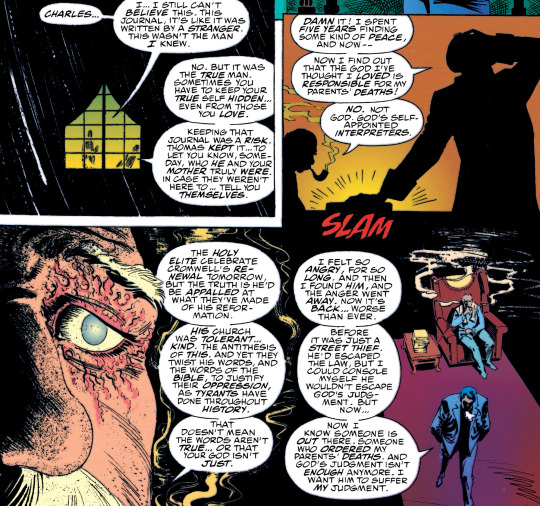

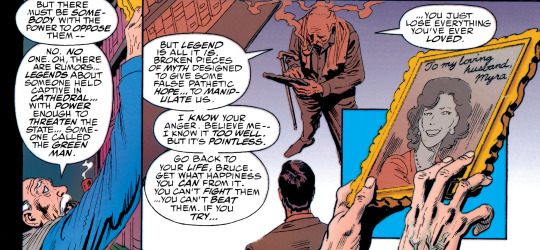
Poor Alan Scott, who tried to break the state's stranglehold on communications by starting an underground radio network... Carter and Shiera, who used their passports as archeologists to smuggle weapons into the country... Rex Tyler, secretly manufacturing drugs for our clinic in his pharmaceutical plant... All caught. All executed, overtly or covertly, all friends.
Charles McNider in Batman: Holy Terror (1991) #1
(Alan Brennert, Norm Breyfogle)
#ask to tag if necessary. some pretty bad horror in here#batman: holy terror#batman: holy terror 1991#alan brennert#norm breyfogle#charles mcnider#dr midnite#martha wayne#thomas wayne#bruce wayne#batman#jsa#justice society of america#dc#dc comics#dcedit#comicedit#comicsedit#u can reblog#SORRY THIS WAS COMPLETELY CRAZY TO ME. UM. I HAD TO POST. JUST COMPLETELY CRAZY
2 notes
·
View notes
Text

1 note
·
View note
Quote
Marveled at how two souls - two completely different species - could make each other so happy. If you were kind to animals, they repaid that kindness a thousandfold. People disappointed; animals never did.
Alan Brennert, Daughter of Moloka'i
3 notes
·
View notes
Text
Lista di libri che possono cambiarti la vita o il tuo punto di vista sul mondo
Esistono molti libri che credo possano creare un vero cambiamento interiore nel lettore, ma è qualcosa di molto soggettivo. Per me e per la mia crescita magari sono risultati importanti dei romanzi che ad altri non hanno trasmesso le stesse cose. Però se dovessi dirvi qualche titolo che secondo me può veramente se non altro cambiare il punto di vista del lettore su alcune cose vi potrei elencare questi:

- Il mondo di Sofia, di Jostein Gaarder
Link: https://amzn.to/3I5TxP7
Trama: Questo è il romanzo di Sofia Amundsen, una ragazzina come tante altre. Tutto comincia dalle strane domande che spuntano dalla sua cassetta delle lettere, passa attraverso le intriganti risposte dell'eccentrico filosofo Alberto Knox e approda a una bislacca festa di compleanno nel giardino degli Amundsen... Ma è anche il romanzo di Hilde Moller Knag, e per lei comincia proprio nel giorno del suo compleanno, passa attraverso l'insolito regalo che suo padre, il maggiore Albert Knag, le ha inviato dal Libano e approda a una notte stellata nel giardino della famiglia Knag a Lillesand... Ma è anche il romanzo appassionante della storia della filosofia, e per tutti noi comincia dagli atomi di Democrito e dalle idee di Platone, passa attraverso le geniali intuizioni di Galileo e il complesso sistema di Hegel e approda all'esistenzialismo di Sartre e al multiforme panorama del pensiero contemporaneo.
La mia opinione: questo libro non è altro che un piccolo compendio dei principali filosofi della storia sottoforma di romanzo per ragazzi, ma il bello è che non lo sembra. Non c’è alcun nozionismo, bensì le domande filosofiche che si pone la protagonista spinta da un misterioso qulacuno, sono semplicemente le domande che ogni essere umano si è posto prima o poi nella vita. Niente di più e niente di meno, e questo libro fa sopratutto capire come la filosofia non sia qualcosa di lontano da noi, una materia da studiare e imparare, ma scaturisce da noi stessi, dal nostro bisogno di risposte per poter vivere. La trama è semplice e al tempo stesso non lo è, ma ti pare letteralmente un mondo. Ricordo che lo lessi alla fine delle scuole medie perchè poi avrei iniziato il liceo classico e una delle materia che avrei dovuto studiare per la prima volta lì era appunto la filosofia. Ora inutile dirvi che questo romanzo non mi ha certo aiutato poi nello studio di quella materia, studiare filosofia vuol dire anche studiarne la storia ed è una cosa più seria, ma mi ha cetamente aperto la mente a domande che non mi ero mai posta e mi ha permesso di capire meglio da cosa nasce la filosofia e che i fiolosofi sono persone esattamente come noi che hanno semplicemente cercato delle risposte a quesiti universali.
- I Miserabili, di Victor Hugo
Link: https://amzn.to/3IsNIg5
Teama: E’ la storia di Jean Valjean, ex carcerato, ancora ricercato che vive sotto mentite spoglie cercando redenzione e di Javert, il poliziotto che lo insegue. Ma è anche la storia di Cosetta, la bambina salvata e adottata da Valjean, e Mario, il giovane che si innamorerà di lei. Ed infine è la storia dell’immensa folla dei miserabili che popolano i bassifondi di Parigi in fondo quasi indifferenti ai grandi avvenimenti della storia che stanno vivendo.
La mia opinione: Se tralasciamo la trama centrale di questo romanzo che altro non è che un dramma, un tipico romanzo dell’ottocento con un personaggio principale che deve vivere un viaggio interiore di redenzione e che contine molti dei temi comuni a tutti i romanzi dell’epoca, ciò che veramente colpisce di questo libro, o almeno che ha colpito me, è tutto ciò che è stato costruito intorno alla trama. L’ambientazione storica e sociale è estremamente dettagliata e curata sembra quasi di poter respirare l’aria della Parigi dell’Ottocento quasi. I grandi avvenimenti storici vengono descritti sia da un punto di vista esterno, che da quello interno del popolo francese e delle classi indigenti che sono praticamente un altro personaggio molto importante del romanzo. La folla, il popolo quasi come mente collettiva come sentimento unico permea le pagine, e le descrizioni della vita quotidiana di così tante persone con vite e mestieri diversi è veramente affascinante. Questo non è semplicemente un romanzo che racconta una storia, è un romanzo che racconta La Storia con la S maiuscola. Usi, costumi, credenze religiose e supersistizioni, peccati e virtù di kigliaia di persone sono decritti minuziosamente in questa pagine in modo così particolareggiato da quasi travolgere il lettore. Queste parti corali, questi affreschi storici sono ciò che ricordo di I Miserabili e che porto con me, non tanto la storia di Cosetta. E certamente questo libro ha ampliato il mio amore per la storia.
- Ka, di Roberto Calasso
Link: https://amzn.to/3XFEdyh
Trama: «Chi è Ka?» si domanda l’immenso uccello Garuda, sprofondato tra le fronde dell’albero Rauhina, quando incontra questo nome alla fine di un inno dei Veda. Ka è il nome segreto di Prajapati, il Progenitore, colui che ha dato origine ai trentatré dèi e agli innumerevoli uomini. Presto gli dèi e gli uomini lo avrebbero trascurato, sino quasi a dimenticarlo. Ka significa «Chi?», ed è l’ultima domanda, che si pone quando tutte le altre sono state poste. Ma prima dovranno scorrere molti eoni, sorgere e dissolversi molti mondi, in una sequenza di vortici il cui occhio è Ka stesso. Così appaiono i Deva, gli dèi che si battono contro altri dèi, gli Asura, per conquistare il succo inebriante del soma; i Sette Veggenti, che osservano il corso del mondo dagli astri dell’Orsa Maggiore – e talvolta intervengono; Siva, Brahma, Visnu, con le loro vicende intrecciate, variate, riverberate di èra in èra; manifestazioni della Dea, come Sati e Parvati, congiunte a Siva in amori interminabili; il giovane Krsna e il suo corteo erotico di mandriane, le gopi; Krsna maturo, che sovranamente regge le sorti della funesta guerra fra cugini tramandata dal Mahabharata; e infine, già in mezzo al kaliyuga, l’«età del colpo perdente» in cui viviamo, si fa avanti un principe che abbandona la casa del padre e scopre una via della liberazione mai prima calcata: il Buddha. Nella mente si compie ciò che nella mente aveva avuto inizio – e che forse innanzitutto nella mente era avvenuto, per chi sa che «il mondo è come l’impressione che lascia il racconto di una storia», secondo le parole di un antico testo indiano. Per rispondere all’ultima domanda occorre attraversare tutte le storie. E per attraversare tutte le storie occorre porsi, come accadde a Garuda, la domanda su chi silenziosamente le ospita: Ka.
La mia opinione: Ho citato questo libro di Calasso, ma avrei potuto citare anche Le nozze di Cadmo e Armonia come libro che spalanca la mente del lettore, però siccome quest’ultimo si basa sulla mitologia greca e quindi occidentale, per me non è stato così scioccante poichè la conoscevo già approfonditamente grazie ai miei studi classici, mentre Ka essendo incentrato sulla mitologia indiana e asiatica mi ha certamente introdotto a qualcosa che non conoscevo e che quindi mi ha stupito di più. Ka è un libro senza trama o logica narrativa, è un lungo viaggio, circolare e convoluto all’interno della mitologia indiana e asiatica, un piccolo caleidoscopio di storie personaggi collegati e legati tra di loro da mille fili colorati. Certamnte se volete studiare la mitologia in modo serio questo non vi servirà molto saranno altri i libri da leggere, questta è solo una sgargiante introduzione, per niente chiara , ma senza dubbio affascinante a qualcosa che è lontano da noi occidentali. Mi ha affascinato come libro, sì, mi ha spitnto a studiare la filosofia e mitologia siatica più approfonditamente, no. io preferisco i libri più chiari e più logici per conoscere materie nuove. Ma senza dubbio mi ha colpito e non l’ho mai dimenticato.
- La città della gioia, di Dominique Lapierre
Link: https://amzn.to/3Yyl9Dr
Trama: Deluso e amareggiato sotto il profilo professionale, un giovane medico statunitense lascia il suo paese e si trasferisce in India alla ricerca di qualcosa che gli restituisca il senso dell’esistenza, intraprendendo un lungo viaggio dalla ricca America alle bidonville di Calcutta. Ma proprio qui, nelle allucinanti colonie di lebbrosi della «Città della gioia», in mezzo a inondazioni, fame e malattie, il protagonista riuscirà a ritrovare la forza di riscattarsi. Un romanzo sconvolgente, l’epica della speranza e dell’amore, una straordinaria lezione di coraggio.
La mia opinione: mi spiace che questo libro non sia più stato ripubblicato in tempi recenti perchè è veramente secondo me un romanzo molto ma molto importante per capire il concetto di volontariato o aiuti umanitari, o semplimente di altruismo e redenzione. Anche qui la trama non è niente di sconvolgente o nuovo, ho letto altri libri ancora più commoventi riguardanti i lebbrosi come ad esempio Moloka'i di Alan Brennert (pubblicato in italiano col titolo L’ISOLA DEI FIORI ROSSI link: https://amzn.to/3jZw8XH), e in materia di redenzione/rinascita/altruismo sarebbe senz’altro da nominare SIDDHARTHA di Herman Hesse, ma sapete che io non scelgo mai la via più comune. A mio avviso o almeno per me La città della gioia racchiude in sè tutti questi importanti insegnamenti che è possibile ritrovare in latri libri, come un piccolo e prezioso compendio sottoforma di una storia semplice e chiara senza troppa filosofia, anzi a tratti fin troppo cruda e sintetica. Ma è questo suo essere così sintetica e vera che me l’ha fatta apprezzare di più. Non è senza dubbio un libro piacevole, ma insegna qualcosa in modo diretto senza fronzoli. Ne è stato tratto anche un film dallo stesso titolo che vi consiglio. E vi voglio citare anche un altro libro basato più o meno sugli stessi argomenti per me molto importante:The small woman, di Alan Burgess. Non so se sia disponibile in italiano, ma è la storia di una missionaria inglese di umili origini in Cina. La vita di una piccola e modesta donna, che non ha grandi sogni aiuta solo un piccolo villaggio e poi akcuni bambini, ma sono le piccole cose e le piccole vite che alla fine contano, no? Anche da questo è stato tratto un film che amo molto intitolato La locanda della sesta felicità.
- Amabili resti, di Alice Sebold
Link: https://amzn.to/3ItCM1K
Trama: Susie, quattordicenne, è stata assassinata da un serial killer che abita a due passi da casa sua. È stata adescata da quest’uomo dall’aria perbene, che la stupra, poi fa a pezzi il suo cadavere e nasconde i resti in cantina.
E a raccontare la sua storia è lei stessa che come fantasma assiste al dolore dei suoi genitori e all’indagine sul suo omicidio.
La mia opinione: Sicuramente è la scelta narrativa di far parlare la vittima del suo omicidio e di farla assistere a tutte le conseguenze che ne seguono a rendere così emotivamente toccante questo libro. E ciò che lo fa funzionare così bene è nache che non è mai drammatico o troppo sentimentale, è realistico asciutto e chiama le cose col loro nome senza ingigantirle o minimixzzarle. Stupr e, omicidio, sono parole grosse, importnati che quin vengono utilizzate nel modo giusto e migliore per colpire il lettore. Non per niente la’utrice è stata vittima vittima lei stessa di uno stupro che l’ha cambiata per sempre, come racconta nel libro LUCKY. E quando ha parlare è una vera vittima fa tutta la differenza. Ora non so se questo libro mi ha colpito tanto perchè sono una donna, non ve lo so dire, e non so dirvi se anche da un uomo può fare lo stesso effeto, ma di certo è un libro importante.
- Linea rosa, di Dina Silver
Link: https://amzn.to/3ItE6BS
Trama: Sydney Shephard è una ragazza sveglia, determinata e piena di vitalità. Frequenta l'università e ha un fidanzato straordinario, Ethan, che ama tantissimo e con il quale progetta di sposarsi. Un giorno però una doppia linea rosa su un test di gravidanza cambia per sempre i suoi programmi per il futuro: Sydney, infatti, scopre di aspettare un figlio... Grace è una bambina troppo alta per la sua età e ha una nonna che manda regali solo a lei e non al suo fratellino: quando, durante una lezione di scienze, scopre di essere nata anni prima del matrimonio dei suoi genitori, rimane turbata e comincia a farsi mille domande. Chi è davvero suo padre? Perché la madre l'ha tenuta all'oscuro di tutto?
La mia opinione: Dubito che questo libro sia ritenuto fondamentale o cambia vita da altre persone a parte me, molti neppure lo conosceranno, ma per quanto mi riguarda è un romanzo che pure nella sua semplicità affronta l’argomento di una gravidanza giovanile in modo semplice diretto e duplice, dal punto di vista sia della madre che della figlia. Quindi la storia si dipana tra passato e presente mostrando le conseguenze di ogni decisione passata. Non è niente di sconvolgente, nè un capolavoro della letteratura, ma trovo affronti questo tema e indirettamente anche il tema aborto, in modo molto diretto senza giudizio. Forse sorvola su alcune problematica, forse semplicizza troppo alcune cose, probabilmente esistono romanzi molto più forti diretti e importanti su questi stessi argomenti, ne sono più cvhe certa. Ma per quanto mi riguarda io ho leto questo e mi ricordo questo come una lettura che ha cambiato il mio punto di vista su alcune cose.
#dina silver#alice sebold#dominique lapierre#alan burgess#hermann hesse#alan brennert#roberto calasso#jostein gaarder#victor hugo
4 notes
·
View notes
Text
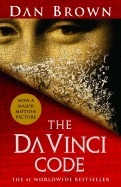

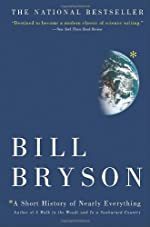
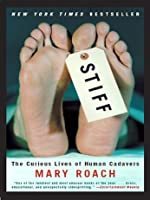


Most Popular Books Published in 2003 [That I've Read] | GoodReads
3 | The DaVinci Code - Dan Brown
4 | The Curious Incident of the Dog in the Night-time - Mark Haddon
7 | A Short History of Nearly Everything - Bill Bryson
11 | Stiff - Mary Roach
18 | A Million Little Pieces - James Frey
34 | Moloka'i - Alan Brennert
#2003 books#books of 2003#books published in 2003#most popular books#the davinci code#dan brown#the curious incident of the dog in the night time#mark haddon#a short history of nearly everything#bill bryson#stiff#mary roach#a million little pieces#james frey#moloka'i#alan brennert
2 notes
·
View notes
Text
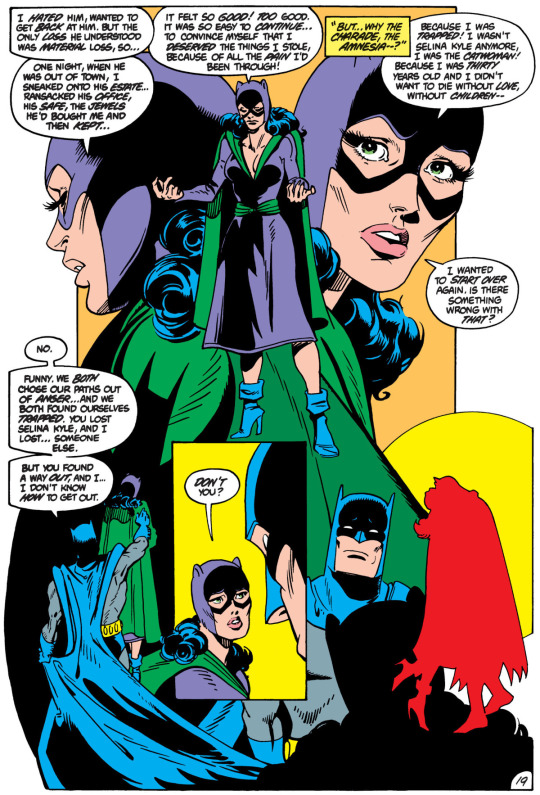
April 1983. What makes "The Autobiography of Bruce Wayne" (in THE BRAVE AND THE BOLD #197) so devastating is that writer Alan Brennert forces both Bruce and Selina to come clean: why they each do what they do, and why neither of them really sees a way out. The reason the ending hits is not just that Bruce and Selina get together at last; it's that Bruce has to accept that there will be no endgame for him until he lets go of the things he's been clinging to for 30 years.
The reference here to an amnesia charade is actually not Brennert's invention (although Selina's account of her abusive early marriage is). In BATMAN #62, back in 1950, Selina had suffered a blow to the head and claimed that her identity as Catwoman was the result of having been injured in a plane crash years earlier that left her with amnesia. Batman bought this, somehow, and Selina actually retired for a couple of years, but the amnesia story seemed fishy even at the time, and she subsequently returned to her life of crime. (She escaped at the end of her last Golden Age appearance in DETECTIVE COMICS #211, although in this story, she's apparently been captured and sent back to prison subsequent to that.) Brennert starts from the premise stuff about amnesia was indeed a lie (which is not a great stretch if you read her early '50s appearances), and asks why she would make up such an outlandish story.
#comics#the brave and the bold#brave and the bold#alan brennert#joe staton#george freeman#golden age batman#batman#bruce wayne#catwoman#selina kyle#batcat#batromance#pre crisis#his saying that she found a way out is a bit rich#given that he literally had to get her out of prison earlier#to help him deal with the scarecrow
20 notes
·
View notes
Photo

Reda Tomingas’s book cover for the Lithuanian edition of Alan Brennert’s Daughter of Moloka'i.
4 notes
·
View notes
Photo

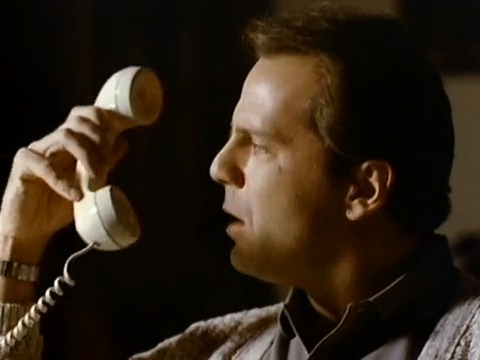
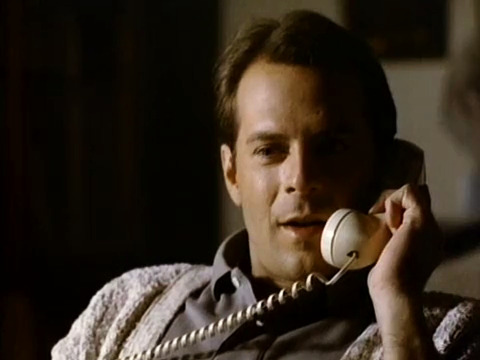
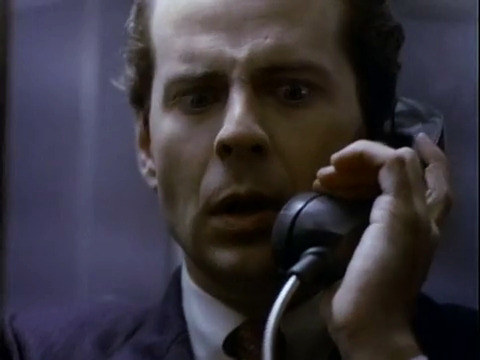

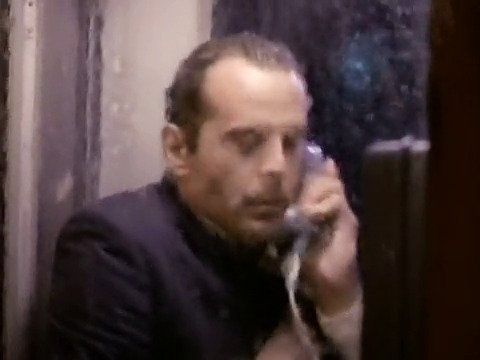


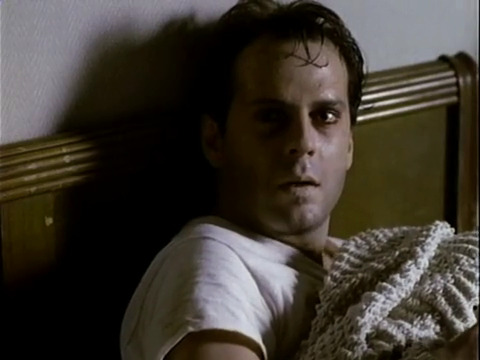

1.01a Shatterday
Director: Wes Craven
Writer: Alan Brennert (teleplay) & Harlan Ellison (short story)
Cinematographer: Bradford May
Opening Narration:
“Some push for what they need; some push for what they want. Some people, like Peter Jay Novins, just push. If they do it hard enough and long enough, something might just push back… from The Twilight Zone.”
Summary:
One night, in a crowded Manhattan bar, Peter Novins (Bruce Willis) distractedly makes the mistake of dialing his own phone number. In an unexpected turn of events, Peter Novins, having a cozy night in, answers the call. Over the course of the next few days, the two Novinses battle for ownership of his life. Novins #1 closes out his bank account and cancels his grocery delivery all while locked out of his apartment by Novins #2. Novins #2 meanwhile pulls out of a deal to do PR for an environmentally destructive company, and takes decisive steps to repair relationships with his mother and ex. As the days go by, Novins #1 shows distinct signs of illness and of wasting away, while Novins #2 becomes more vibrant and vigorous. Through phone conversations, the Novinses argue over what they’re experiencing, Novins #2 posits that Novins #1 had been leading a life filled with self-serving cruelties and that maybe this split was Novins’ personified last shred of decency taking a stand. In the end, when they finally meet face-to-face, Novins #1 comes to terms with his loss, and Novins #2 sympathetically casts off his old self.
Closing Narration:
“Peter Jay Novins, both victor and victim of a brief struggle for custody of a man’s soul. A man who lost himself, and found himself, on a lonely battlefield, somewhere… in The Twilight Zone.”
More about Shatterday:
One of the guiding principles at the conception of TZ ‘85 was that it was going to be a writer’s TV show. The writer’s voice was going to be paramount in the creative vision of the show. Alan Brennert, TZ ‘85’s Executive Story Consultant, chose the short story “Shatterday” by Harlan Ellison for adaptation. Ellison, who was already a big name in speculative fiction, had also been hired on as a Creative Consultant for the series. While Brennert wrote the teleplay for this episode, Ellison contributed to the script and was on set for filming. (Though Ellison stated later that he didn’t contribute much on set as he didn’t quite jive with the episode’s director, Wes Craven.)
Shatterday serves as a great kick off to the series—it shows so much promise in capturing that elusive Twilight Zone-iness. The story is effectively wrought with a lot of great visual storytelling elements to contrast the two Novinses. The music gives the right eerie discordant tones at the right moments. The character journey of Novins #1 is essentially grieving over the loss of his own life and Willis’ performance is pitch perfect. Willis captures the disbelief, anger, desperation, and resignation of Novins #1, while on the flip side capturing Novins #2’s calm determination.
Shatterday is a familiar type of speculative story for The Twilight Zone. A preternatural challenge to the natural order is introduced and the story then follows a person’s journey to cope with it and/or reevaluate their perceptions. A factor that I think is important to this type of story from the original TZ is its shorter length at ~24 minutes. When executed well, you are left with plenty to mull over or expand your imagination with, but it’s told in a short enough burst that too many thoughts of practicality don’t seep in and distract you from the point of the story.
The TZ ‘59 episodes that Shatterday most reminded me of were Nervous Man in a Four Dollar Room (S2E3) and In His Image (S4E1), particularly the element of someone choosing to make a foundational change in the way they live their lives necessitating the old version of themselves becoming just a memory.
✨Support✨
#Twilight Zone#the twilight zone#1980s#TZ '85#Philip DeGuere#alan brennert#harlan ellison#Shatterday#Wes Craven#Bradford May#bruce willis#cinematography#television#Classic TV#classic television#Classic Horror#Classic Science Fiction#speculative fiction#horror#Tv History#close up#close-up#New York City
11 notes
·
View notes
Text



Gary Coleman played a supergenius child president of a planet on "Buck Rogers in the 25th Century" (1979). The script was by Emmy winner Alan Brennert, possibly the best Batman writer (though least prolific) and author of the extraordinary novel of the leper colony "Moloka'i."
525 notes
·
View notes
Quote
After a while the fear became a constant, cold companion, a simple fact of existence.
Alan Brennert
2 notes
·
View notes